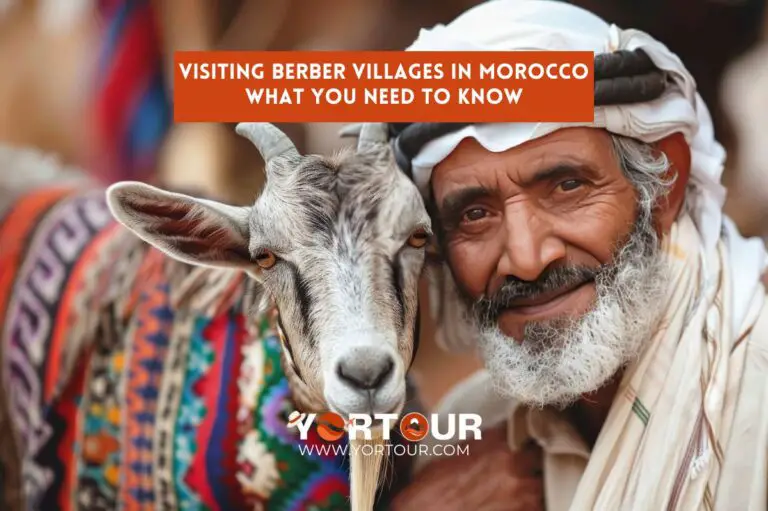Morocco is a land of diverse landscapes, vibrant cultures, and ancient traditions. Among its most fascinating and historically significant communities are the Berber villages of Morocco. These villages, nestled in the majestic Atlas Mountains and the sweeping desert landscapes, offer travelers an authentic glimpse into the heart of Morocco’s indigenous heritage. The Berber people, also known as the Amazigh, have a rich history dating back thousands of years, and their villages reflect a way of life that has remained largely unchanged for centuries.
Visiting these Berber villages in Morocco not only offers a unique cultural experience but also provides an opportunity to immerse oneself in the natural beauty of the region. From traditional mud-brick homes to the vibrant markets and hospitable locals, the Berber way of life offers a contrast to Morocco’s bustling cities. In this guide, we’ll explore everything you need to know before embarking on your journey to the Berber villages of Morocco, ensuring that you are well-prepared for a truly enriching experience.
1. Who are the Berbers?
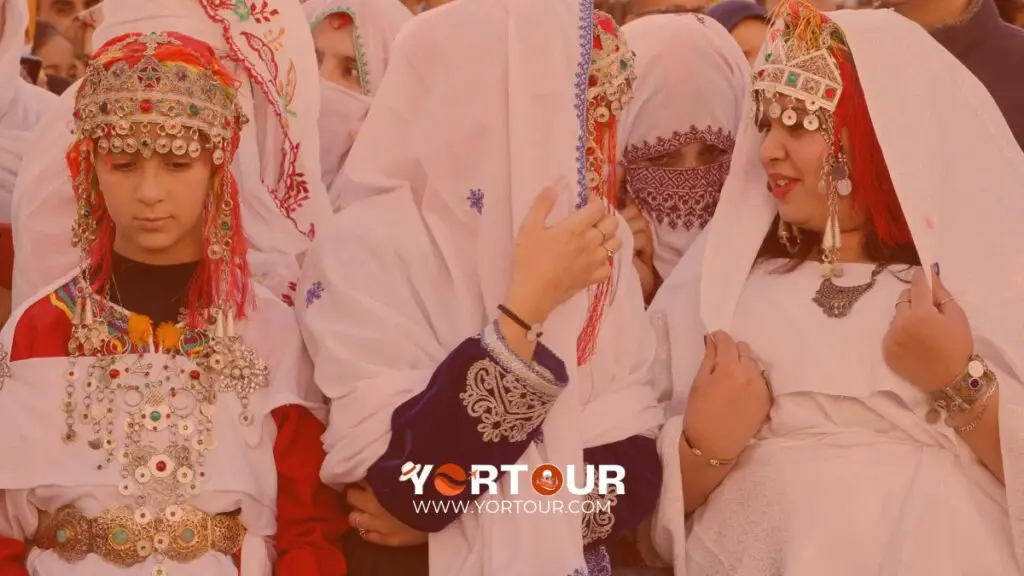
The Berbers or Amazigh are the indigenous people of North Africa, with a history that stretches back over 4,000 years. Although spread across various countries, including Algeria, Tunisia, and Libya, the Berbers are most prominently associated with Morocco, where their culture and traditions have thrived.
The term “Berber” was originally given to them by outsiders, but they refer to themselves as Imazighen, meaning free people. Their language, Tamazight, is still widely spoken in rural villages, alongside Arabic and French. Their culture is deeply rooted in the traditions of farming, craftsmanship, and storytelling, passed down through generations. For travelers, visiting a Berber village in Morocco is an invitation to explore these ancient customs firsthand.
2. Why Visit Berber Villages in Morocco?
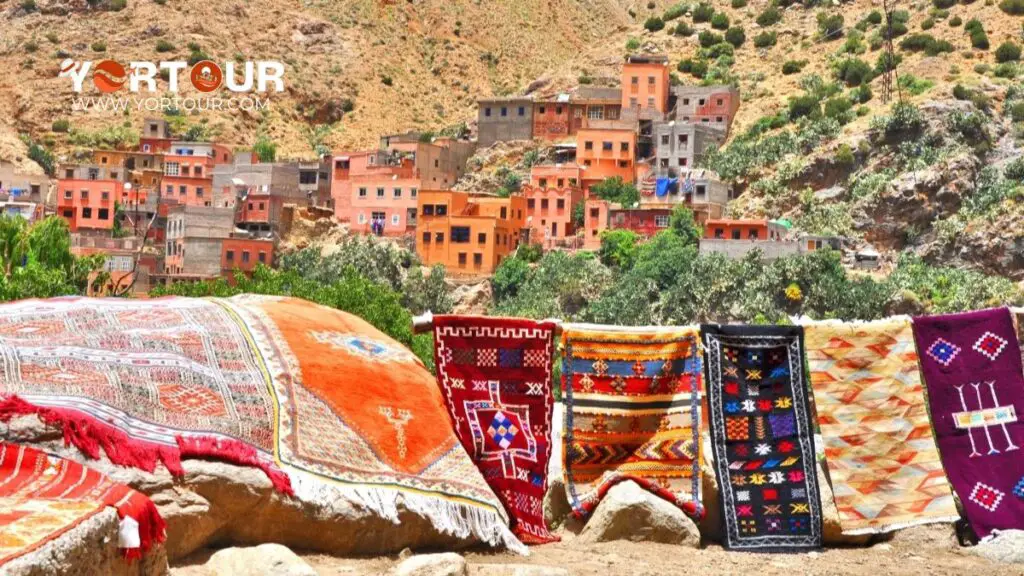
Visiting the Berber villages of Morocco offers an immersive cultural experience unlike any other. Here are some of the top reasons why these villages should be on your itinerary:
- Cultural Immersion: Discover the traditions, music, and crafts that have shaped Berber life for centuries.
- Authentic Experiences: Stay in traditional Berber homes, partake in local meals, and explore the daily life of the villages.
- Scenic Landscapes: These villages are often located in breathtaking settings, from the peaks of the High Atlas Mountains to the vast expanses of the Sahara Desert.
- Historical Significance: Learn about the rich history of the Berber people and their role in shaping Morocco’s identity.
3. Where to Find Berber Villages in Morocco
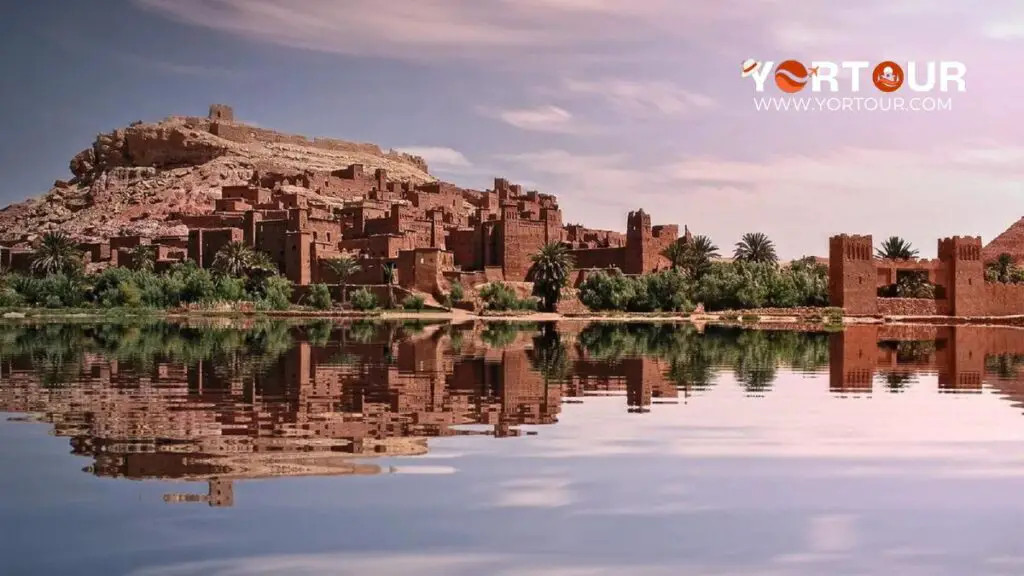
Morocco is home to a number of Berber villages, each with its own unique charm and setting. Here are some of the most notable regions where you can experience Berber culture:
Atlas Mountains
The Atlas Mountains are one of the most popular destinations for travelers seeking to explore Berber culture. The villages here are often built into the mountainside, offering stunning views of the valleys below.
- Imlil: A gateway to the Toubkal National Park, this village is a starting point for treks to Mount Toubkal, the highest peak in North Africa. The villagers are known for their hospitality, offering traditional meals and accommodation.
- Aït Benhaddou: A UNESCO World Heritage site, this fortified village is a prime example of traditional Berber architecture. Located near Ouarzazate, it has been featured in numerous films and remains a well-preserved glimpse into Berber life.
Sahara Desert
The Sahara Desert is another iconic region where Berber communities thrive. Here, you can experience the desert lifestyle, complete with camel treks and traditional Berber tents.
- Merzouga: Located near the Erg Chebbi dunes, Merzouga is a popular base for desert adventures. The Berber people of this region live in small settlements, maintaining their nomadic roots.
- Tamegroute: Famous for its pottery and ancient library, this village offers a mix of desert culture and artistic craftsmanship.
4. What to Expect When Visiting Berber Villages
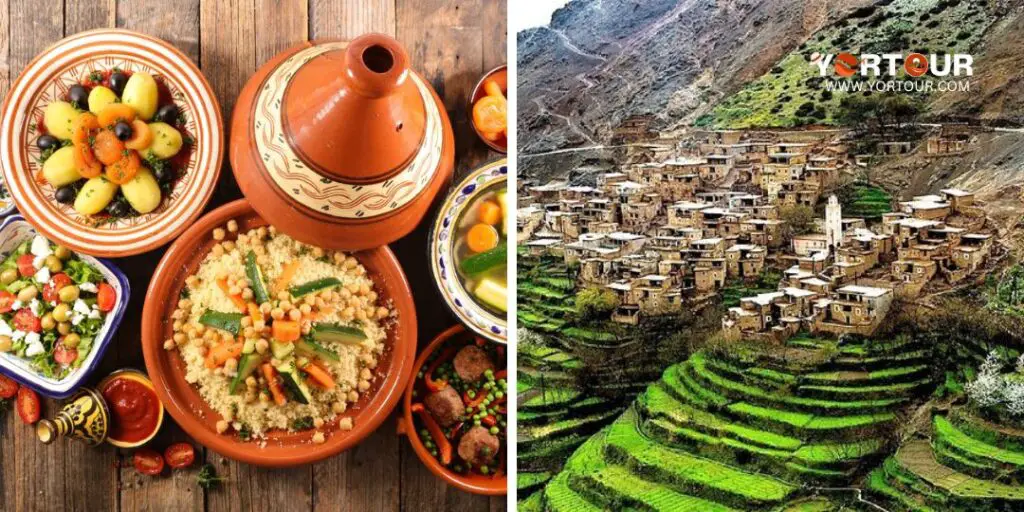
When visiting a Berber village in Morocco, you can expect a few key experiences that are central to Berber hospitality and lifestyle. Here’s what you should know:
Traditional Berber Homes
Most Berber homes are made from mud bricks and wood, blending seamlessly with the natural environment. Inside, you’ll find simple yet functional furnishings, including woven carpets and handmade pottery. Guests are often invited into the living area to share meals and stories.
Berber Cuisine
Berber cuisine is hearty and flavorful, using ingredients like couscous, lamb, and seasonal vegetables. Tagine, a slow-cooked stew prepared in a clay pot, is a staple dish. Meals are often shared communally, accompanied by traditional bread and mint tea, which is a symbol of Berber hospitality.
Cultural Etiquette
When visiting Berber villages, it’s important to respect local customs and traditions. Modest dress is appreciated, especially in rural areas. Always ask for permission before taking photos of people, as many Berbers value their privacy.
5. Top Activities to Do in Berber Villages
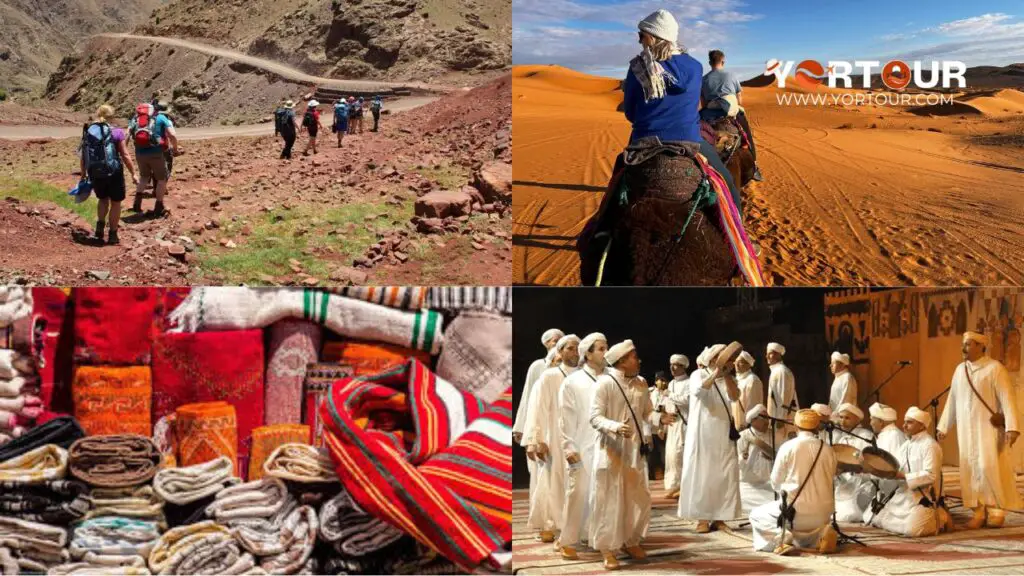
Visiting Berber villages in Morocco offers a range of activities that allow you to fully immerse yourself in the local culture and environment:
- Trekking: The Atlas Mountains are perfect for trekking. Whether it’s a multi-day hike to Mount Toubkal or a leisurely walk through the valleys, you’ll be surrounded by stunning landscapes.
- Camel Rides in the Desert: For a truly authentic experience, embark on a camel trek through the Sahara. Spend the night in a traditional Berber camp under the stars.
- Craft Workshops: Many villages offer workshops where you can learn traditional Berber crafts, such as pottery, carpet weaving, and jewelry making.
- Music and Dance: Berber music and dance are an integral part of their culture. You might be lucky enough to witness a traditional performance during a festival or community gathering.
6. How to Prepare for Your Visit to a Berber Village
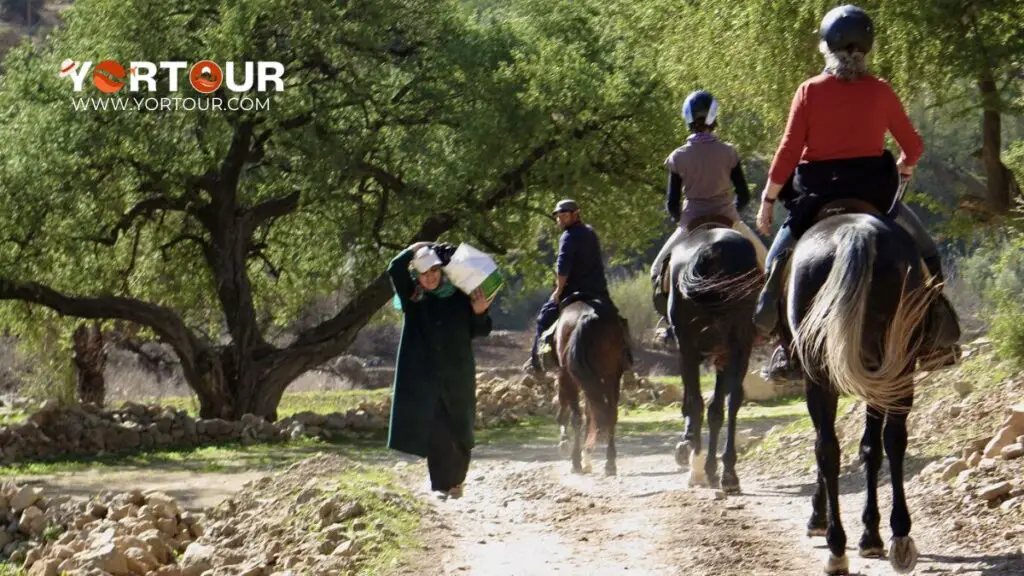
Visiting a Berber village in Morocco requires some preparation, especially if you plan to stay overnight or engage in activities such as trekking. Here’s what you should keep in mind:
What to Pack
- Comfortable clothing: Pack lightweight, breathable clothes for the day and warmer layers for the cooler evenings, especially in the mountains or desert.
- Hiking boots: If you’re trekking, sturdy hiking boots are essential for navigating the rugged terrain.
- Sun protection: Sunglasses, hats, and sunscreen are a must for protection from the intense Moroccan sun, especially in the desert.
Health and Safety
- Stay hydrated: The dry climate can easily lead to dehydration, so carry plenty of water with you.
- Vaccinations: Ensure your routine vaccinations are up to date before traveling, especially if you’re visiting remote areas.
- Local guides: Hire local guides who know the region well. Not only will they enrich your experience with their knowledge, but they’ll also ensure your safety during treks or desert trips.
7. Best Time to Visit Berber Villages

The best time to visit the Berber villages in Morocco largely depends on the region and the type of experience you’re seeking.
Spring (March to May)
Spring is an ideal time to visit the Atlas Mountains, as the weather is mild and the valleys are lush with greenery. It’s also a great time for hiking, as temperatures are comfortable for outdoor activities.
Autumn (September to November)
Autumn offers similar advantages to spring, with cooler temperatures in both the mountains and the desert. This is a popular time for treks and desert camping.
Summer (June to August)
Summer can be extremely hot, particularly in the desert regions. However, the higher altitude villages in the Atlas Mountains remain relatively cool, making it a good escape from the heat.
8. Sustainable Tourism in Berber Villages
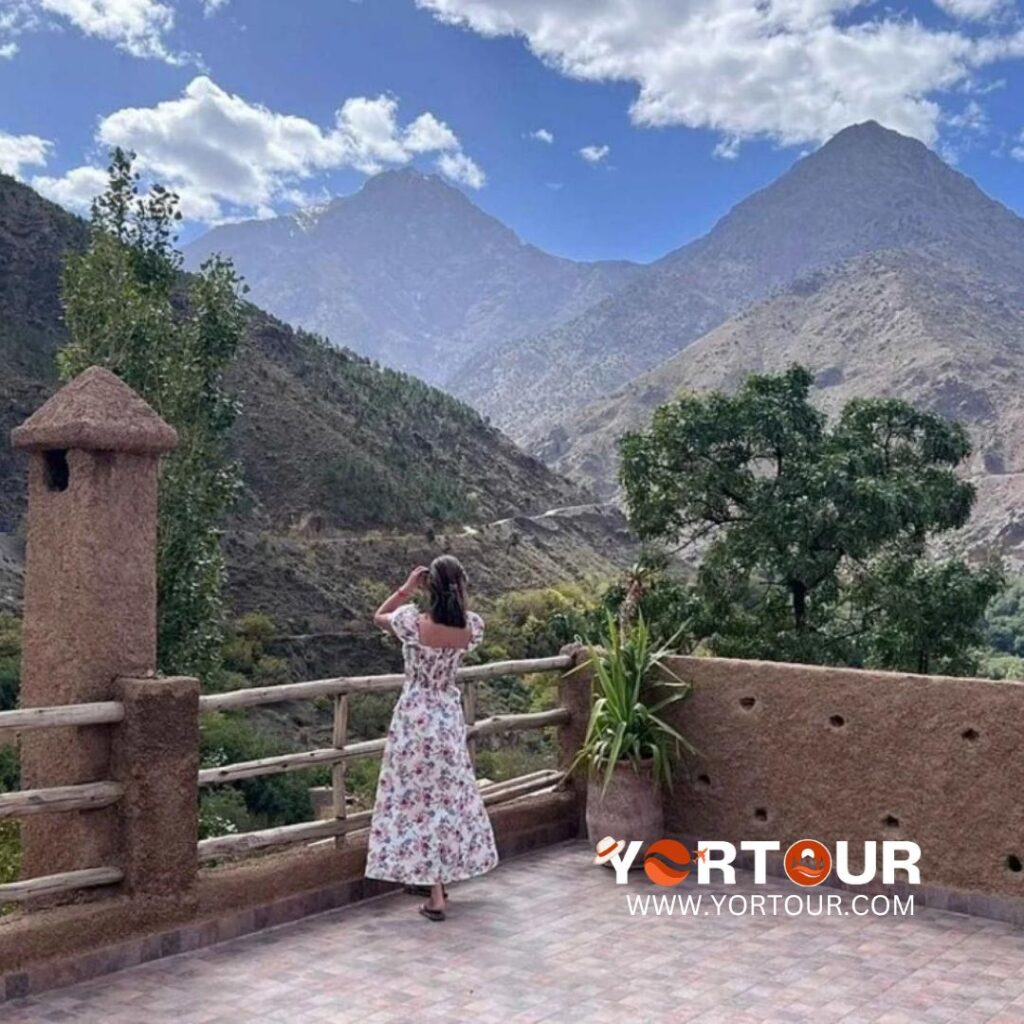
As tourism in Berber villages in Morocco increases, it’s essential to practice sustainable tourism to preserve the environment and support local communities. Here’s how you can contribute:
- Choose local guides: Hiring local Berber guides helps support the community and ensures that your money goes directly to the people who live in the region.
- Respect the environment: When trekking or exploring, avoid littering and be mindful of the natural surroundings.
- Purchase local crafts: Support local artisans by purchasing handmade goods, such as rugs, pottery, or jewelry, directly from the villagers.
9. Staying in a Berber Guesthouse
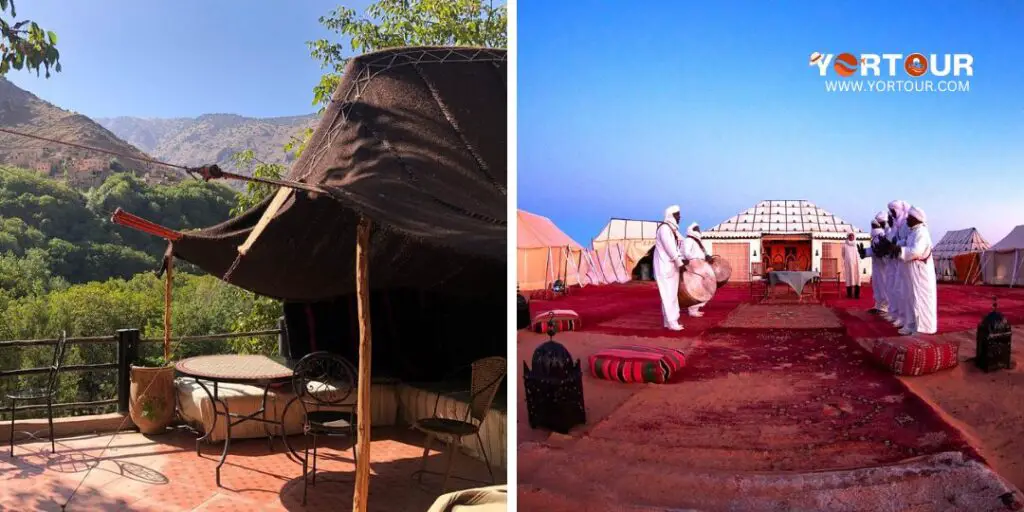
One of the most authentic ways to experience Berber culture is by staying in a Berber guesthouse. These guesthouses, often run by local families, offer a unique opportunity to live like the Berbers do. You’ll enjoy traditional meals, participate in daily activities, and sleep in traditional accommodations.
- Riad Jnane Imlil: Located in the Atlas Mountains, this guesthouse offers breathtaking views and a chance to experience Berber hospitality.
- Desert Camp in Merzouga: For a desert experience, spend a night in a Berber camp. You’ll stay in tents made of wool and enjoy traditional Berber music and dance around the campfire.
10. How to Respect Local Customs and Traditions
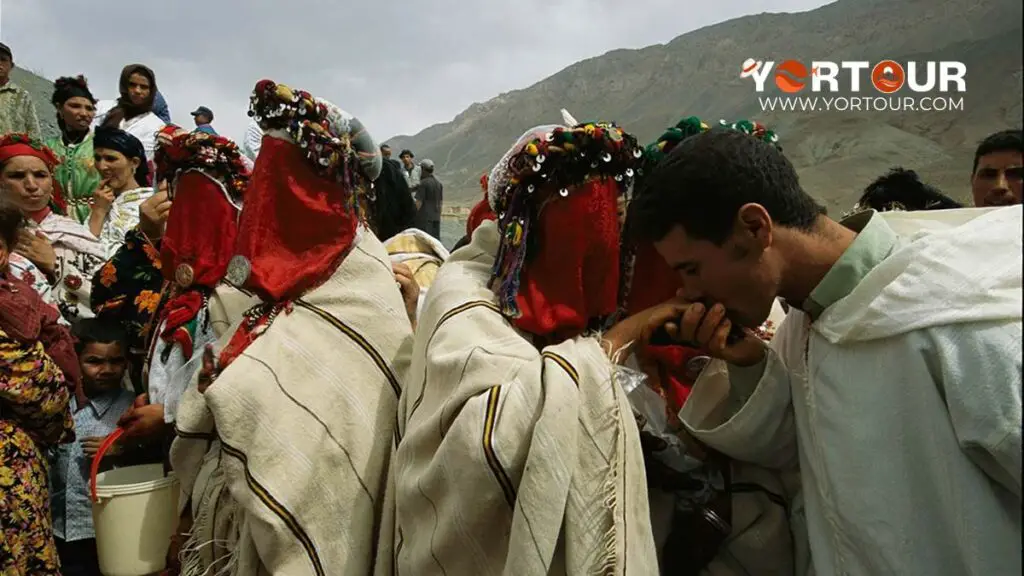
When visiting Berber villages, it’s essential to respect their customs. The Berber people are known for their hospitality, and they expect visitors to be courteous in return. Here are a few tips:
- Dress modestly: Especially in rural areas, it’s respectful to wear modest clothing.
- Ask for permission before taking photos: Many Berbers are private and may not appreciate having their photos taken without permission.
- Engage with the locals: Take the time to talk to locals, learn about their way of life, and show interest in their culture.
Conclusion
Visiting the Berber villages of Morocco is a journey into the heart of the country’s indigenous culture. From the rugged Atlas Mountains to the vast Sahara Desert, these villages offer an authentic and enriching experience that connects travelers to the ancient traditions of the Berber people. Whether you’re trekking through the mountains, riding camels in the desert, or staying in a traditional guesthouse, you’ll leave with a deeper understanding and appreciation of Morocco’s rich heritage.
By respecting the customs, supporting local communities, and embracing the simplicity of life in the Berber villages, you’ll not only enhance your travel experience but also contribute to the preservation of this unique culture for future generations.
FAQs
Discover answers to common questions about visiting Berber villages in Morocco. Learn about their rich culture, best villages to visit, activities to enjoy, and how to support local communities during your stay.
1. Who are the Berbers, and where are their villages located in Morocco?
The Berbers, or Amazigh, are the indigenous people of North Africa, including Morocco. Their villages are primarily located in the Atlas Mountains and the Sahara Desert, offering travelers a glimpse into their ancient culture and traditions.
2. Why should I visit Berber villages in Morocco?
Visiting Berber villages provides an authentic cultural experience, where you can explore traditional Berber architecture, taste local cuisine, engage in ancient crafts, and enjoy breathtaking landscapes such as mountains and deserts.
3. What are some of the most popular Berber villages to visit in Morocco?
Some of the most well-known Berber villages include:
- Imlil: A gateway for trekkers in the Atlas Mountains.
- Aït Benhaddou: A UNESCO World Heritage site known for its unique architecture.
- Merzouga: Near the Sahara Desert, famous for its sand dunes and desert camps.
4. What types of activities can I do in Berber villages?
Activities in Berber villages include:
- Trekking in the Atlas Mountains.
- Camel rides in the Sahara Desert.
- Learning traditional crafts like pottery and weaving.
- Participating in local festivals, music, and dance events.
5. What is the best time to visit Berber villages in Morocco?
The ideal times to visit are spring (March-May) and autumn (September-November) when the weather is mild. Summers can be very hot, especially in the desert, while winters in the mountains can be cold.
6. What should I wear when visiting Berber villages?
Dress modestly and comfortably, especially if you’re in rural areas. Lightweight clothing is ideal for the day, but bring layers for cooler evenings, particularly in the mountains or desert.
7. Can I stay overnight in a Berber village?
Yes, many Berber villages offer guesthouses or homestays where travelers can experience traditional Berber hospitality, share meals, and learn about the local way of life.
8. What kind of food will I eat in Berber villages?
Berber cuisine includes dishes like tagine, couscous, and freshly baked bread. Meals are often shared communally, and you’ll likely be served mint tea, a symbol of hospitality in Berber culture.
9. Is it safe to visit Berber villages in Morocco?
Yes, Berber villages are generally safe and the locals are known for their hospitality. However, it’s always a good idea to travel with a guide, especially in remote areas or for trekking adventures.
10. How can I ensure my visit supports the local Berber community?
To practice sustainable tourism, consider:
- Hiring local guides.
- Staying in locally-run guesthouses.
- Buying handmade crafts directly from artisans.
- Respecting local customs and the environment.
